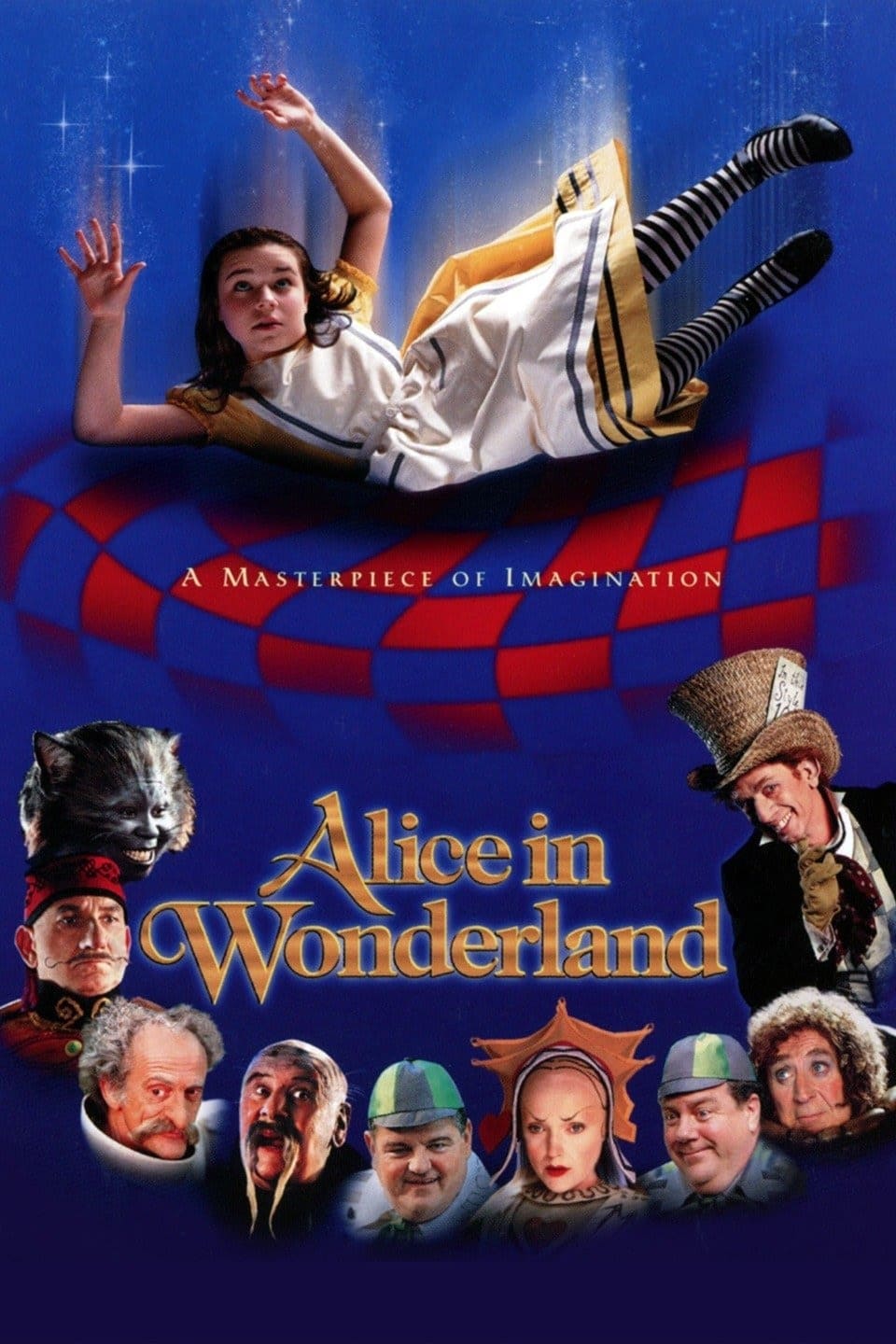
Alice follows a white rabbit down a rabbit-hole into a whimsical Wonderland, where she meets characters like the delightful Cheshire Cat, the clumsy White Knight, a rude caterpillar, and the hot-tempered Queen of Hearts and can grow ten feet tall or shrink to three inches. But will she ever be able to return home?
21 Jan Alice in Wonderland (1999)
Veronica Boff
The ‘Alice’ stories are several things at once: a remarkable fantasy, a collection of intriguing jokes and puzzles, a Bulwer-Lytton influenced cabalistic journey, and off-hand satire. It is deep no matter what direction you plumb, and that’s the magic of it.
But most all, it is wrapped in some enchanting images and clever storytelling. Unfortunately, film adapters only see the images and characters and think that’s the essence of the thing.
So we end up with a Disney version that has none of the magic of the books, and goofs around the scenes but preserves the characters more or less. And we have projects like this (and several others) that preserve much of the language and the characters in some fashion. They are as lifeless as ordinary fare, reflecting little of what works with Carroll.
We have the Beatles version which focused on the Tarot connection and some of the images. That is probably the best.
In the meanwhile, there a few spoken versions that are preferable to this tripe, which borders on evil in its transmogrification, except for the staging of the ‘Walrus and Carpenter.’
Some notes:
–Alice was brown-haired until 1950, so that is okay, though her hair is often lit to be red. The yellow dress is apparently to work better with green screen techniques. The Duchess and Knave of Hearts are red-haired, and at least they got this right as the two are supposed to be parallel versions of Alice.
–The helter-skelter mixing of the two books is understandable, but the placement of each episode within the books is essential to preserve. They miss here.
–A post-menarche Alice (even with shaved eyebrows) misunderstands the nature of pre-sexual fantasy leveraged by Carroll. Even Svankmejer’s Alice got this right.
–They should have credited Donovan Leich for the tune to the “Join the Dance” number at the end.
If you insist on finding a filmed Alice, you’ll have to settle for bits and pieces from other films. For instance, the best White Knight is Pellinore in ‘Camelot,’ referencing the ‘Wizard of Oz.’The best White Rabbit is the pooka in ‘Donny Darko,’ referencing ‘Harvey.’ The best Red Queen is Sean Young in ‘Blade Runner’ (ever think where the name came from?), referencing Virginia Woolf, whose sister this Red Queen (Miranda Richardson) played in ‘The Hours.’
Posted in 2003
Ted’s Evaluation — 2 of 3: Has some interesting elements.


No Comments